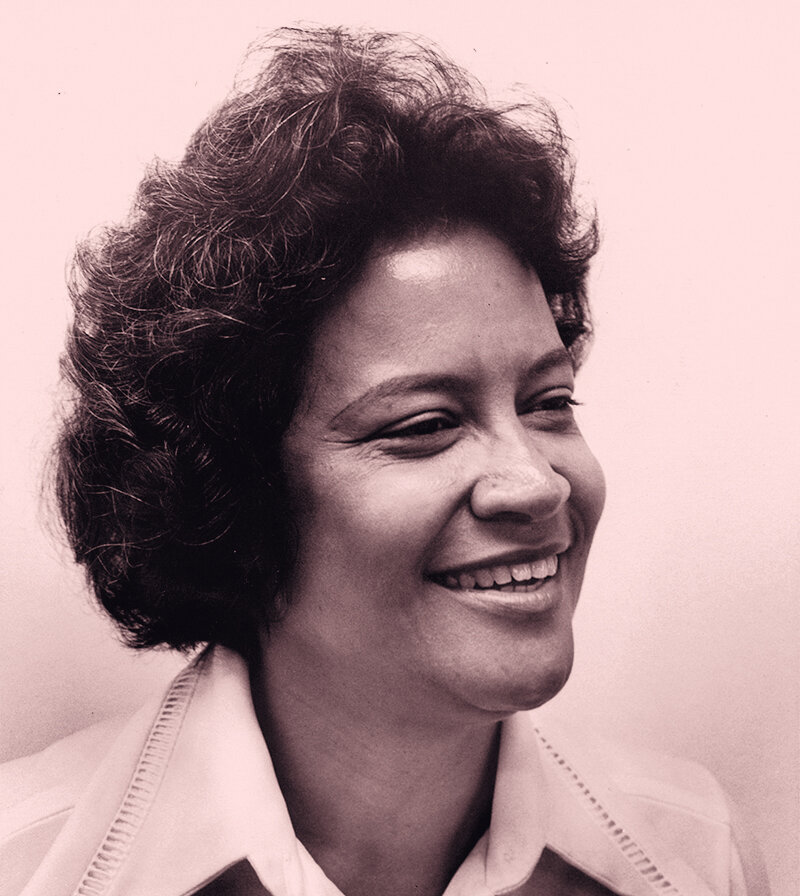Paul Revere Williams
First Black Member of the American Institute of Architects
Renowned architect Paul Revere Williams. Photo courtesy of the Public Broadcasting Service (PBS).
Despite the obstacles faced by being black, Paul Revere Williams enjoyed an astonishing career as an architect. He spent close to six decades designing more than 3,000 projects, many designated for his native Los Angeles and others for various cities of the world. He came from humble beginnings yet managed to launch an architectural career in the early 1920s. Paul quickly rose to prominence in his field, even becoming the first black member of the American Institute of Architects (AIA) in 1923. He made history a second time with the same organization when, in 1957, the AIA inducted him into the College of Fellows, its highest membership honor. He was the first black architect of that distinction.
Paul Revere Williams was born in Los Angeles on February 18, 1894. He had an older brother named Chester. His parents were Chester Sr. and Lila Wright Williams, who migrated from Memphis to Los Angeles in 1893. Paul’s father died from tuberculosis in 1896, and his mother suffered the same fate in 1898 when the same disease claimed her life. That left the brothers in foster care before two separate families adopted them. Paul developed an interest in art and focused on the craft in high school. While he studied architecture at a Los Angeles art institute, Paul found work as a landscape architect. At age 22, Paul enrolled at the University of California and spent three years learning architectural engineering. There, he designed his first residential buildings and later earned his degree.
Della Mae Givens, Paul’s wife, lived to be 100 years old.
A year after entering the university, Paul married Della Mae Givens in a ceremony held at the First AME Church in Los Angeles on June 27, 1917. The couple had three children, the first of which—a boy named Paul Revere Williams, Jr.—died the day he was born, on June 30, 1925. Two daughters survived. Marilyn Frances Williams was born on December 25, 1926, and Norma Lucille Williams was born on September 18, 1928.
Paul acquired his architect’s license in 1921, making him the first black architect in the entire American West. He was able to begin placing his signature touch on residential homes a year later. Plans called for a new Flintridge community in the San Gabriel Valley, and developers chose Paul to design its houses. Between 1921 and 1924, Paul worked for architect John C. Austin, the designer of some of Southern California’s landmark buildings, such as the Shrine Auditorium and Los Angeles City Hall. Paul established his own office and took on clients after his time with Austin ended, and while he endured racism, projects began to pour in.
Paul learned that many of his white clients objected to sitting next to a black man. So rather than draft his project designs while seated shoulder-to-shoulder with a client, he learned to draw upside down. That way, the renderings appeared right side up to the person sitting across the table from him. It became his signature practice. Paul encountered other forms of racism as well. Prevailing segregation covenants barred him from living in the white neighborhoods for which he designed homes. The Flintridge community he helped design had a land deed that restricted blacks from spending the night.
In time, big-name Hollywood clients like Cary Grant, Lucille Ball, and Desi Arnaz came knocking, and the homes Paul designed for them came to embody Southern California glamour, which the rest of the country tried to emulate. A large portion of his legacy became that of being the “architect to the stars.” Frank Sinatra was one such client. When Sinatra was between marriages and looking to expand his career in film, he needed a home near the Hollywood studios. He immediately hired Paul to design it and gave him near-complete creative freedom. Sinatra had few requests. Among them: the house had to be built around a hi-fi sound system to accentuate his recorded music.
Frank Sinatra, Norma Williams Harvey, and Paul Revere Williams (Norma’s father) hashing out designs for Sinatra's home. Photo courtesy of PBS.
To that end, Paul filled the walls of the main living area with gravel due to its acoustic properties. He also installed loudspeakers in the ceiling and other state-of-the-art equipment and controls throughout the house. After workers completed the house, it was featured on the then-popular reality television show Person to Person, hosted by Edward R. Murrow. Sinatra offered a walkthrough of the home, treating viewers to all of Paul’s signature touches.
During the live television broadcast, Sinatra walked viewers to the dining room at the rear of the house. It opened onto a patio that overlooked Beverly Hills. Since the 1930s, Paul began reordering the standard design of homes, placing the dining room at the back and the kitchen upfront. That way, homeowners were able to enjoy their gardens, pools, or backyards as they ate. But while preparing meals at the front of the house, the street and front entrance was in view.
While Paul was instrumental in creating the California style, he operated in several architectural modes via various projects. The elegant home was far from the only structure in his oeuvre. Paul worked on projects as diverse as the Palm Springs Tennis Club, the Polo Lounge at the Beverly Hills Hotel, and federally funded housing projects like Pueblo del Rio in Los Angeles. The famous restaurateur Alex Perino also hired him to turn a Thriftimart market into one of the most exclusive eateries in the city. The Hollywood elite frequented Perino’s in its heyday when waiters delivered food on solid silver pastry carts and trays. Today, many of the houses designed by Paul Revere Williams rarely go on the market, as their owners have come to prize them highly.
You may also be interested in:

This article appears in 45 People, Places, and Events in Black History You Should Know.
Available from Amazon.com, BN.com, and other retailers.





Horace King was a celebrated bridge architect and builder in the mid-nineteenth century. He began his bridge-building career as a slave and ended as a free, wealthy black Southerner.